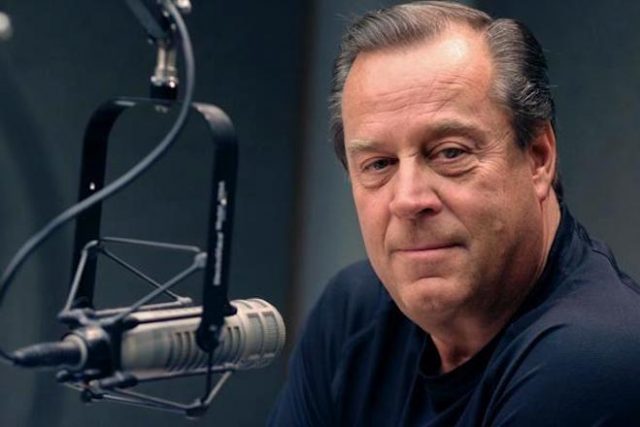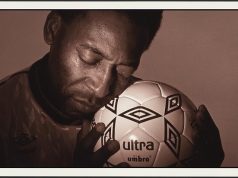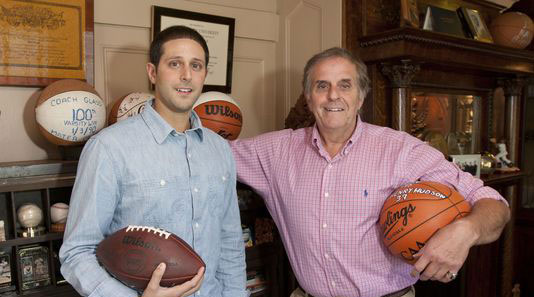This article originally appeared on https://blogs.loc.gov/ And was written by Matthew Barton.
There are more automobile racing-related recordings in the holdings of the Recorded Sound section of the Library of Congress than you might think. They include classic early 1960s songs that celebrate hot rods, documentary recordings made at races from Long Island to California to Monaco, and radio coverage of great early drivers like Wilbur Shaw and Billy Winn.
The biggest cache of racing recordings though, is in the “Sports Byline U.S.A.” Collection, which holds dozens of interviews with top drivers recorded from 1988 to the present day, especially Indy Car drivers. While we wait for this year’s 500 on May 30, let’s look back, or rather, listen back, to some of the legendary winners interviewed by Ron Barr on the “Sports Byline U.S.A.” daily radio series. They include Johnny Rutherford, A.J. Foyt, Bobby Unser and Mario Andretti, who between them won 11 of the 500s from 1961 to 1991.
Three-time Indy winner Johnny Rutherford appeared on the third “Sports Byline” program ever broadcast, on October 28, 1988. It’s a wide ranging conversation on racing and his many other interests, including flying (“I’m a frustrated fighter pilot!”), street rods (“I’ve got a ’34 Ford Coupe that I’m finishing up”), hunting (with fellow Indy winner Danny Sullivan) and oil painting.
Rutherford was nearing the end of his career, one which reflected all of the changes in the sport since his early days at the legendary Devil’s Bowl Speedway in Dallas, Texas in 1959. “It was built in a rock quarry,” he recalled, “…And it was a one third of a mile oval dirt track, and the first and second turn of the race track were on normal terrain levels…but the third and fourth turns were down in the quarry, around probably 20, 25, 30 feet maybe, below the surface of everything else, so it made a really natural viewing area for the fans because the grandstands were built around the rock ledge on the normal terrain level around the quarried-out stone, and the track was built in there. It made for some very, very exciting racing. It was a normal oval but you had a backstretch that you came off of on the second turn and about halfway down…it just went downhill into this quarry and around the other two turns and back uphill toward turn one again… It’s gone, but to be able to say I started my racing career at the old Devil’s Bowl in Dallas means quite a bit to me.”
But rear engine cars took over at the 500 in the 1960s, and since then, sprint and Indy Car drivers have tended to go their separate ways, employing and refining different technologies and skill sets in their vehicles, as Rutherford noted: “My only regret is that sprint car drivers today don’t get the opportunity today that we did when we came out of sprint cars to go straight to Indianapolis and there are a lot of excellent sprint car drivers that could be excellent speedway car drivers if they had the opportunity and I really hate to see the fact that sprint car drivers aren’t even considered for [Indy] today and there’s not a chance for them to make the transition if they want to.” Indeed, the only driver with a sprint car background to win Indy since Rutherford has been Al Unser, Jr., who raced sprint cars as a teenager in the 1970s, and by his own admission was not very good at it.
A.J. Foyt also had a background in sprint cars, though he got his start in in midget cars at Saturday night races in Texas in the mid-1950s. Even after his early successes in Indy Car racing, he would enter sprint and midget races occasionally. He recalled fondly to Barr in 2003: “You race and then, if you have a little trouble with another driver, the fans would always run on to the back of the grandstand to see who won the fight in the pits. That’s what I always loved about Saturday night racing and local races was racing hard and having the fights afterwards. You know, it was a lot of fun.”
In 2003, three-time Indy winner Bobby Unser–who passed way on May 3 at age 87– told Barr of entering the sport at the age of 15 in an open wheel mash-up of a vehicle with a Cadillac engine set “in a pickup truck frame shortened up with a pickup truck body on it, all of this to make it very light; it was what’s called a super modified stock car.”
Unser emphasized that learning in such cars “was a giant help. We weren’t specialists in anything, or look at it the other way, and we were specialists in all things. It didn’t make any difference. If it had wheels on it, if it had an engine in it, we raced it. And that’s the way we were taught…. If you wanted to make a living driving race cars, you’d better be capable of driving all of them. Now today, most of the drivers that you find, and not all of them, but most of them now are specialists. They only do one type of racing, and that’s about all they want to do, and I think they miss a great part of the fun.”
Like Johnny Rutherford, the legendary Mario Andretti was nearing the end of a great career when he spoke to Ron Barr in 1993. When asked about how drivers paced themselves throughout the 200 laps of the 500, Andretti used the question to describe the changes in the race since his first start in 1965:
“Nowadays, I’ll tell you, the reliability factor is really with you, in other words, the cars and the engines are able to really take a lot of punishment. So, even a race [like Indy] is flat out, from flag to flag. It’s no more ‘hey, long race…pace yourself and wait and see what happens.’ It’s no more like that. In the last five, six, seven years…you’re almost like qualifying every lap. Because of that, obviously, everything is so intense, physically, mentally. I mean, you got to be right on. If there’s a lapse in the handling or whatever, you pay for it dearly…. The quality of the fields, teams and the driving is so high today that it makes it tough not only to win, but just to be somewhere in the first five.”
Other Indy winners in the “Sports Byline” collection include Danny Sullivan, Emerson Fittipaldi, Arie Luyendyk and Al Unser, Jr.
To read more about the “Sports Byline U.S.A.” Collection at the Library of Congress, and listen to other interviews, click here: //www.loc.gov/collections/sports-byline/about-this-collection/
Since 1988, the “Sports Byline U.S.A.” radio series has regularly presented interviews with notable figures from the world of sports. To date, they have aired over 7,500 such interviews with athletes, coaches, trainers, managers, owners, writers and others in the areas of baseball, football, basketball, hockey, soccer, tennis, golf, track and field and other sports.









